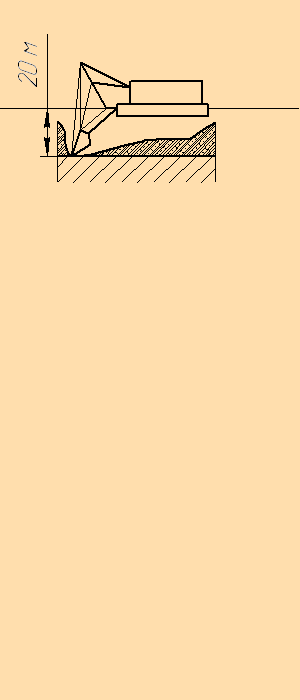

Donetsk National Technical University
Masters portal of DonNTU
Main page



Reduction of mineral reserves available for mining on land with an open pit methods makes more urgent the development of submarine mineral deposits, located on the bottom of the seas and oceans. At the current level of consumption of confirmed gas reserves should last for 67 years, oil - for 41, copper, nickel and tin - at 30-35, lead and zinc - by 20-25, gold and silver - for 15-20 years, manganese, chromium, molybdenum - a 25 ... 30 years. Only coal reserves can meet the needs of the world economy for more than 200 years. And if the mining of oil and gas at relatively shallow depths (shelf deposits) are already relatively long time, the development of even a relatively shallow (500 m) shelf deposits of solid minerals is still not widely used due to lack of technical solutions for their lifting.
Studies conducted in the late XIX century (the first oceanographic expedition aboard the "Challenger" 1872-1876, and subsequent) in the sediments of the ocean were discovered large reserves of so-called iron-manganese nodules (IMN) - mineral aggregates, formed by the diffusion concentration of trace components enclosing environment around one or more mineral centers, ranging in size from several centimeters to a meter, containing, in addition to iron and manganese, copper, zinc, cobalt, nickel and other metals. At the same time in the IMN content and concentration of some metals is several times higher than reserves of the fields of land.
The chemical composition of the Pacific ore crusts, studied in most detail, is dominated by manganese and iron, with an average content, respectively, 22.5 and 15%. The most valuable component - cobalt - is concentrated in places up to 2,5%, with an average content of 0,68%. In some areas, such as the underwater slopes of the Hawaiian Ridge and the Tuamotu Islands, in crusts observed high content of platinum (up to 4 g / t), silver (up to 3,7 g / t) and gold (up to 0.169 g/t).
According to the above, in the short term, as a necessity, requires the development of cost-effective, high-technology methods and equipment for industrial production and the rise of the oceans metals of strategic importance, largely concentrated in the international seabed area.
The organization of production and processing of solid minerals from the seabed associated with the four phases of operations carried out by a complex of machines and mechanisms, which are placed on floating or basis in the aquatic environment.
The choice of means and methods of production is a multifactorial problem, whose solution depends on the variation of many components, the main of which is the depth of field development.
The aim of this work is to increase the depth of the possible development of subsea fields and reduce energy consumption at the expense of justification of rational parameters of hydraulic turbine drive pumps.
By the principle of recovery of solid minerals, all systems can be divided into two types - the system of mechanical and hydraulic principles of action. By the principle of the mechanical systems include single-and multi-bucket dredge. By the principle of the hydraulic systems are lifting system with pumps, installed above the water, submersible pumps, airlift pump, jet system.
Dredges with submersible pumps can be divided by type of drive into 3 categories:

Promising is to use the drive submersible pump active turbines installed on one with the pump shaft, powered by energy from the pressurized water pipe installed on the board of the drive pump. The advantage of this scheme is the possibility of obtaining large heads and feed than in the case of a submersible pump with electric drive, due to increase in speed of the pump shaft, the rejection of being in water, high voltage electrical cable and a sealed motor, the application of hydraulic pressure to drive the bottom of mechanisms collecting and crushing nodules. The disadvantages of the scheme can be attributed more constructive complexity, increasing number of devices in the chain, the presence of a second pipeline, the need for careful balancing of the rotor and the special requirements for assembly turbopump.
Basic scientific and practical results are the following:

